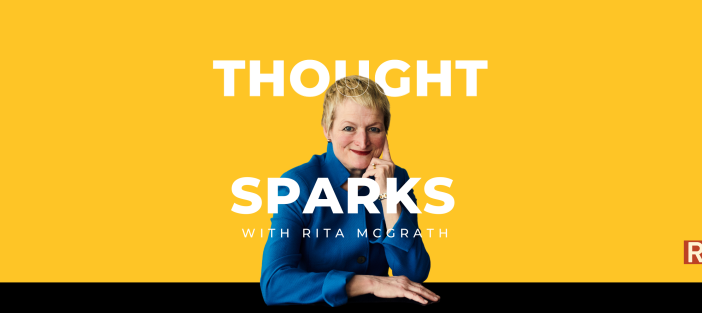
When the top leadership of an organization changes, boards often make decisions that seem sensible, but which may not reflect the pattern that made a company successful to begin with. A major reason is that the heir apparent to a highly successful CEO often has quite different skill sets.

CEO change – more transient, and expensive, than ever
Just as companies face the phenomenon of transient advantage, so too apparently do CEO’s. According to a recent study by Equilar, the median tenure of CEO’s in the S&P 500 “has decreased 20% from six years in 2013 to 4.8 years in 2022. Although the average tenure also decreased during this period, the decline was comparatively modest. In 2013, average CEO tenure stood at 7.6 years, and by 2022, it had dropped slightly to 7.2 years. While this represents a 5.3% drop, the contrast between the median and average tenure is worth noting.” As the researchers point out, a few long-tenured and successful CEO’s skew the average number upward, while the typical CEO doesn’t make it for long. An example of a long-lived and also highly successful CEO is Jensen Huang, the CEO of Nvidia, who has been in the role for over 30 years, despite the dramatic upheavals of the industry the firm operates in.
39% of the CEO’s in the study are in office less than 5 years, while 28% were in the five to ten year category, meaning that over half of all these major business leaders were in their roles less than ten years, and most far less than that. What that means is that 10-20% of all publicly traded companies in any given year are likely to face the need to replace their CEO. A 2015 study by by Ken Favaro, Per-Ola Karlsson, and Gary L. Neilson found that the direct costs of an unexpected CEO transition rapidly mount up.
A large severance payment, six-figure retainer packages for search firms, flights for emergency Board meetings, costs for the mobilization of armies of professionals – communications consultants, employment lawyers, psychological counselors, movers and relocation experts all add up. As the authors point out, these costs “pale in comparison to the less visible costs. Turmoil and uncertainty at the top filter quickly down through the organization, slamming the brakes on growth initiatives, hindering the closing of vital deals, and causing some valued employees to start looking for new positions elsewhere. Because unexpected successions can paralyze even the best-functioning companies, they can wreak a harsh toll on revenues, earnings, and stock prices.”
The authors conclude that “Large companies that underwent forced successions in recent years would have generated, on average, an estimated US$112 billion more in market value in the year before and the year after their turnover if their CEO succession had been the result of planning.”
The state of the art of succession planning
The research is not ambiguous: more often than not, succession planning in established firms doesn’t go so well. Only about half of all Boards are developing someone specific for the top job, and 39% don’t have a viable internal candidate. As I’ve written about previously, the “talent factory” companies that used to take enormous pride in being great people developers have largely abandoned their formal leadership growth tracks. Many directors don’t actually know much of the talent in the firm below the “C” suite level and those people important enough to be on earnings calls. Research shows that only about a quarter of all corporate directors are involved in the performance evaluations of the next band of leaders below the “C” suite. Even though research suggests that firms who promote insiders do better, more and more roles are being filled by outsiders. And perhaps most tellingly, many Boards treat succession planning the way a lot of us treat getting around to making our wills – as something that will just go away if we ignore it for long enough. It’s an event, not a process.
While doing justice to the whole process of succession planning is more than one can handle in a newsletter, there is an interesting pattern I’ve observed.
Visionaries, Operators, Sales Guys and the Heir Apparent
Every generation has its own version of the rock star CEO and founder. Steve Jobs, co-founder at Apple. Mark Zuckerberg at Facebook. Jeff Bezos at Amazon. Bill Gates at Microsoft. Brin and Page at Google. Elon Musk and the rest of the “PayPal mafia.” Oprah Winfrey at anything she tries her hand at. Sarah Blakely. Tory Burch. Jensen Huang at Nvidia. Ed Catmull at Pixar. Francisco D’Souza at Cognizant. Even Taylor Swift! These are often the public faces of their companies, the original visionaries, personally associated with the success and culture of their firms.
In more established firms, such as IBM, Proctor & Gamble or Ford, you’ll also find visionary leaders such as Lou Gerstner, A. G. Lafley and Alan Mulally taking on a similarly outsized role.
The visionary of the company – whether a founder or a CEO brought in during a crisis – often partners with someone who can be thought of as an operator, or who manages a powerful function, such as sales. Tim Cook at Apple. Robert McDonald at P&G. Steve Ballmer at Microsoft. Sam Palmisano at IBM. Mark Fields at Ford.
Here’s where the succession dilemma kicks in. These people often become the taken-for-granted candidate to replace the CEO. Political and power dynamics often guarantee this outcome. Boards are comfortable with the operating executive. They are highly thought of in the company. And they have demonstrated substantial loyalty to the incumbent, who is highly likely to be a major deciding voice in the choice of successor.
Here’s the problem. They may well be extraordinarily accomplished operating executives, but their focus is often on operational challenges, inward mandates and near-term performance. This changes what the organization pays attention to and what strategies it pursues. Their shortcomings, moreover, may not become evident for years, particularly when following exceptionally gifted leaders who have left behind their strategies, valuable assets and a strong leadership team. Absent a board that is alert to the risks of this process, it’s very easy for the successor to continue to implement the visionary’s strategy – long after changing circumstances suggest a shift is in order.
Operators don’t mind reporting to visionaries, but vice versa?
There is absolutely no question that Microsoft’s performance under Steve Ballmer was in many ways outstanding. However, as former Medtronic CEO and now Harvard Business School executive fellow Bill George points out, “It was obvious certainly at the 10-year mark, maybe before, what he was doing was cheering on the strategies Bill Gates had put in place.”
Similar observations have been made about Tim Cook, despite his leading a massively successful Apple post Steve Jobs’ death. Designers grumble that they have lost influence to engineers. Indecision at the top is being blamed for the $5 billion (or more) fiasco that was Apple’s potential entry into the autonomous car business. And the company has not come up with a product that matches the “dent in the universe” of its iconic IPhone since 2007.
At Cognizant, Frank D’Souza stepped down in 2019, after an unprecedented run of success. He was replaced by an outsider, Brian Humphries, who had just spent a short period as CEO of Vodafone, and prior to that had mostly financial and operating roles as companies such as Dell and HP. Four short years later, in 2023, the Board decided to terminate Humphries and appoint Infosys President Ravi Kumar in his stead. Interestingly, both companies were on my list of “growth outliers” featured in a 2012 Harvard Business Review article.
At P&G, similarly, Lafley’s successor was blamed for under-performing relative to the company’s competitors and failing to deliver on promised growth. By the time the company attracted an activist investor, the board felt that Bob McDonald had lost the confidence of his executive team. A. G. Lafley returned to the company to replace him in a barely-veiled reversal of the succession plan. It was announced by no one other than Jim McNerney, Chairman of P&G’s board, the former CEO of General Electric who earned the dubious distinction of his own ascent to the CEO role called one of Jack Welch’s most regretted decisions. Howard Schultz of Starbucks, Bob Iger of Disney, Michael Dell of Dell all came back into the top jobs at their companies after successors failed to live up to expectations.
It doesn’t stop at the top
When leaders at the top turn over, that has a ripple effect throughout the organization. As Jeffrey Pfeffer describes in his marvelous book Seven Rules of Power, once one has power, one must use it. That often means exiling rivals, bringing allies into positions where they support the leader and creating entirely new coalitions across the firm. The more hierarchical the firm, the greater this effect is likely to be. This in turn tends to spark executive departures, consolidation of power at the top of the company and general stasis while everybody figures out the new order of things.
Given all this, it would behoove organizations to be more proactive about considering succession events, which are a perfect example of what we at Valize call a “time zero” event. Our suggestion is to create an early warnings system for the board to both keep on top of and plan for this kind of dramatic corporate transition.
Intrigued? Kes Sampanthar is leading the charge on this practice.
